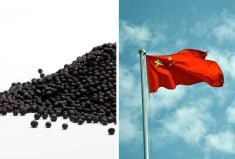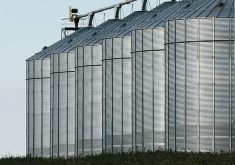Winnipeg, Aug. 28 (CNS Canada) – The start of harvest operations across Western Canada brought an air of uncertainty to the grain and oilseed markets during the week ended Aug. 25, as participants worked to get a better handle on the size and quality of this year’s crop after many areas dealt with adverse conditions.
That uncertainty was being felt in the ICE Canada canola futures, with the November contract bouncing around in a sideways trading range of about C$490 to C$515 per tonne.
Statistics Canada releases its first official survey-based production estimates of the year on August 31, and opinions are very much divided on whether or not the canola crop ended up above or below the 18.4 million tonnes grown in 2016. While average guesses are for similar production on the year, individual opinions range about a million tonnes or more on either side of unchanged.
Read Also

Canada and China discuss disputes over canola and EVs, says Ottawa
Senior Canadian and Chinese officials discussed bilateral trade disputes involving canola and electric vehicles on Friday, Ottawa said, but gave no indication of any immediate breakthrough.
Old crop supplies are already thought to be tight, and a StatsCan production number on the lower end of expectations would likely be supportive for prices. However, canola is a crop that has been known to surprise with good yields despite adverse conditions in the past, and a bearish surprise from StatsCan is still a possibility.
World markets are also keeping a close eye on Canadian wheat prospects, with the concerns over the state of this year’s U.S. spring wheat crop crossing north of the border as well. There’s no argument that Canada’s wheat crop will be down from the 31.7 million tonnes grown last year (all-wheat including durum), but just how much smaller remains to be seen.
In the U.S., a crop tour of key soybean and corn growing regions during the week kept a bit of a cautious tone in both commodities, as yield estimates came in all over the map. Weather forecasts were looking relatively benign for the developing crops during the week, and the good crop prospects had corn testing some its lowest levels of the past year.
Soybean futures remained in a rather narrow range during the week, but soyoil climbed to some of its best levels in a month. The US announced it would be imposing countervailing duties on imports of biodiesel from Indonesia and Argentina due to trade distortions caused by subsidies. The move is expected to effectively shut the door on imports from those two major biodiesel suppliers, which was seen raising the likelihood of increased domestic production of the renewable fuel.
Hurricane Harvey hit Texas and Louisiana over the weekend (August 26-27), bringing excessive rain and severe damage. While the agriculture markets were not seeing an immediate reaction, the aftereffects of the storm will be followed closely. Seeding delays for winter wheat are a possibility, while corn and soybeans could be hurt by excessive moisture if the rain moves north.














